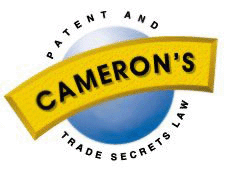
Canadian General Electric Co., Ld. v.
Fada Radio Ld.
citation(s): [1929] 47 R.P.C. 69 (H.L.)
 |
Canadian General Electric Co., Ld. v.
|
copyright 1997 Donald M. Cameron, Aird & Berlis
At p. 90:
"It is well settled that this is a question of construction and that parole evidence is only admissible for the purpose of explaining words or symbols of art and other such like technical matters, and, of course, of informing the Court of relevant surrounding circumstances."
At p. 90:
"It is true that the fact that increased selectivity was apt to result in a diminution of signal strength had been realized by others, and certain devices had been suggested for overcoming it, for example, the employment of a relay in a mechanical or acoustic form by Lorenz. For this purpose, Alexanderson suggests the use of the vacuum tube for coupling the several circuits together at each relay. In their Lordships' opinion, following that of Mr. Justice Maclean, and assuming for this purpose that Alexanderson's suggestion had not been anticipated, the assembling by Alexanderson in one device of the instrumentalities which furnish means for providing selectivity, progressively improving from circuit to circuit, and at the same time preserving the signal strength, displayed sufficient invention to support his Patent. It is true that the vacuum tube which in Alexanderson's invention performs the function of keeping up the signal strength, was not itself new, but the particular use of it for the purpose described in combination with the other elements of the system, and producing the advantageous result, is, in their Lordships' opinion, a sufficient element of novelty to support the Patent. It may be only a small step, but it is a step forward, and that is all that is necessary so far as subject-matter is concerned."
Return to:
Cameron's IT Law: Home Page; Index
Cameron's Canadian Patent & Trade Secrets Law: Home Page; Index